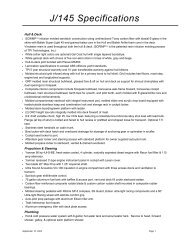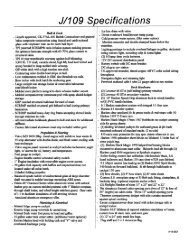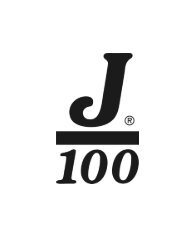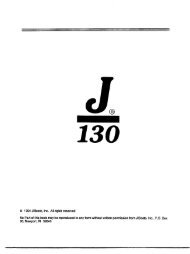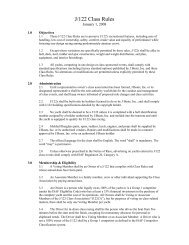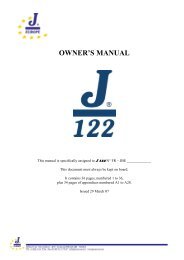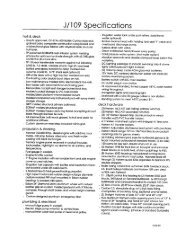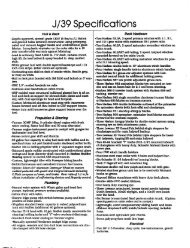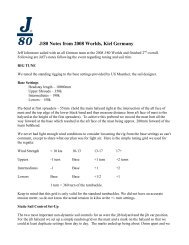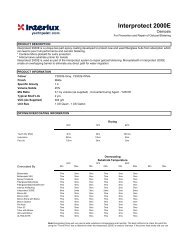J105 Owner Manual 2012.pdf - J/Owners
J105 Owner Manual 2012.pdf - J/Owners
J105 Owner Manual 2012.pdf - J/Owners
You also want an ePaper? Increase the reach of your titles
YUMPU automatically turns print PDFs into web optimized ePapers that Google loves.
J/105 <strong>Owner</strong> Guide ...................................................................................................................................................................................................................................................... 9 <br />
• Install all lifelines without tightening the turnbuckles. Remove the eyes at the ends of the <br />
lifelines and thread them through the stanchions. If the boat is equipped with the <br />
optional lifeline pads, thread the lifeline through these prior to attaching to the stern rail. <br />
• Finish off the job by tightening the turnbuckles, and taping off the turnbuckle “split rings” <br />
(or cotter pins) for a secured finished appearance. <br />
Skylight Ventilation Hatches -‐ are made of extruded anodized aluminum and scratch-‐resistant <br />
acrylic cover. The hatch comes equipped with a ventilation position and 180 degree articulation. <br />
Fixed Ports & Optional Opening Ports -‐ are made with extruded aluminum frames and smoke <br />
colored acrylic. The optional opening ports can maximize interior comfort and cross-‐flow <br />
ventilation. There are four fixed standard ports and two optional opening ports to replace the aft <br />
fixed aluminum ports. <br />
DO NOT PERMIT ACETONE OR OTHER HARSH CLEANSERS TO GET ON PORTS OR HATCHES AS THEY <br />
MAY DAMAGE THE FINISH & CLARITY OF SOME DECK HARDWARE. <br />
Deckhouse Handrails -‐ Stainless handrails are standard for secure maneuvering on deck and ease <br />
of maintenance. <br />
Winches -‐ Standard winches are aluminum self-‐tailing models from Harken. The location of these <br />
winches facilitates sailing with one or two aboard. Each is geared to match the load requirements <br />
of the specific task. <br />
Standard Steering System <br />
The steering system is carefully engineered to provide finger-‐tip control. This is achieved by <br />
utilizing high quality Jefa rudder bearings. The rudder itself is made of unidirectional glass, with <br />
two molded halves bonded together, and a highly reinforced fiberglass shaft. It's engineered to <br />
withstand tremendous shear loads for storm conditions. <br />
Standard Tiller -‐ is a molded, composite part bolted to a custom stainless steel tiller head mounted <br />
to the top of the rudder shaft. The Spinlock adjustable hiking stick is attached on the forward <br />
end of the tiller to enable the helmsman improved visibility sitting further outboard. <br />
Optional Wheel Steering System <br />
Pedestal & Wheel -‐ is custom molded fiberglass. Inside the "compass cowl" is a standard Lewmar <br />
sprocket that is connected to a chain and 7x19 wire to the custom aluminum quadrant. <br />
Adjustment to this linkage is achieved by a set of turnbuckles connected to the steering wire. <br />
These can be accessed through the lazarette locker to starboard of the rudder post. Wheel is a <br />
Lewmar wheel with an elkhide cover. <br />
Rudder Stock Seal -‐ is located at the top of the lower rudder bearing. It is a simple flexible boot <br />
type design that prevents water from entering the hull. If tiller steering is installed, the fiberglass <br />
rudder tube is continuous between the hull and the deck.



